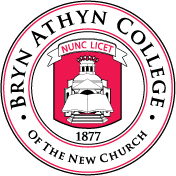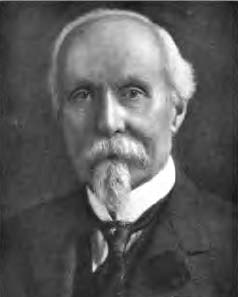
Bryn Athyn is a home rule municipality in Montgomery County, Pennsylvania. It was formerly a borough, and its official name remains "Borough of Bryn Athyn". The population was 1,375 at the 2010 census. It was formed for religious reasons from Moreland Township on February 8, 1916. Bryn Athyn is surrounded by Lower Moreland Township.

Emanuel Swedenborg was a Swedish Christian theologian, scientist, philosopher and mystic. He became best known for his book on the afterlife, Heaven and Hell (1758).

James John Garth Wilkinson, was an English homeopathic physician, social reformer, translator and editor of Swedenborg's works, and a writer on Swedenborgian topics.

Correspondence is a relationship between two levels of existence. The term was coined by the 18th-century theologian Emanuel Swedenborg in his Arcana Cœlestia (1749–1756), Heaven and Hell (1758) and other works.

Bryn Athyn Cathedral is the episcopal seat of the General Church of the New Jerusalem, a denomination of Swedenborgianism. The main building is of the Early Gothic style, while the adjoining structures are of a transitional period reflective of a combination of both Gothic and Norman styles. The exterior appearance of the cathedral itself is reminiscent of Gloucester Cathedral in England.
The Swedenborgian Church in North America is one of a few New Church Christian sects which draws its faith from the Bible as illuminated by the teachings of Emanuel Swedenborg (1688–1772). The denomination's headquarters are on Quincy Street in Cambridge, Massachusetts.

The General Church of the New Jerusalem is an international church based in Bryn Athyn, Pennsylvania, and based on the Old Testament, the New Testament, and the theological works of Emanuel Swedenborg. The General Church of the New Jerusalem distinguishes itself from other Swedenborgian churches by teaching that the Writings for the New Church are the Heavenly Doctrine revealed by the Lord in His Second Coming and have authority equal to the Old and New Testaments. It is larger, newer, and more conservative than the Swedenborgian Church of North America.

Heaven and Hell is the common English title of a book written by Emanuel Swedenborg in Latin, published in 1758. The full title is Heaven and its Wonders and Hell From Things Heard and Seen, or, in Latin: De Caelo et Eius Mirabilibus et de inferno, ex Auditis et Visis. It gives a detailed description of the afterlife; how people live after the death of the physical body. The book owes its popular appeal to that subject matter.
New Church Education is a philosophy of education developed and practiced by the General Church of the New Jerusalem, one of the New Church or Swedenborgian sects. This philosophy is based on some of works of Emanuel Swedenborg, whose theological writings are considered by members of this church to be the revealed Word of God, equal in authority to the Old Testament and the New Testament.

The New Church can refer to any of several historically related Christian denominations that developed under the influence of the theology of Emanuel Swedenborg (1688–1772). The Swedenborgian tradition is considered to be a part of Restorationist Christianity.

Bryn Athyn College is a private Christian college in Bryn Athyn, Pennsylvania. It is affiliated with the General Church of the New Jerusalem.

The Arcana Cœlestia, quae in Scriptura Sacra seu Verbo Domini sunt, detecta, usually abbreviated as Arcana Cœlestia or under its Latin variant, Arcana Cælestia, is an 8-volume theological work published by Emanuel Swedenborg in the 1750s.
The nineteenth day of June is celebrated as a holiday by some branches of the New Church. The holiday commemorates events reported by Emanuel Swedenborg in the work True Christian Religion and it is considered by some to be the "birthday" of the New Church.

John Pitcairn Jr. was a Scottish-born American industrialist. With just an elementary school education, Pitcairn rose through the ranks of the Pennsylvania railroad industry, and played a significant role in the creation of the modern oil and natural gas industries. He went on to found the Pittsburgh Plate Glass Company, an early industry innovator which quickly grew into the largest manufacturer of plate glass in the United States, and amassed one of the largest fortunes in the United States at the time.

Theodore Pitcairn the son of PPG Industries founder John Pitcairn, was a clergyman, theologian, philanthropist, and connoisseur of the arts and antiquities.
Robert Hindmarsh (1759–1835) was an English printer and one of the original founders of Swedenborgianism.
William Frederic Pendleton was the first Executive Bishop of the General Church of the New Jerusalem, in Bryn Athyn, Pennsylvania.
Repentance is a stage in Christian salvation where the believer acknowledges and turns away from sin. As a distinct stage in the ordo salutis its position is disputed, with some theological traditions arguing it occurs prior to faith and the Reformed theological tradition arguing it occurs after faith. In Catholic theology, Lutheran theology, Orthodox theology and Anglican theology, repentance plays a key role in Confession and Absolution.

Samuel Noble (1779–1853) was an English engraver, and minister of the New Church (Swedenborgian).
Augustus Clissold was an English Anglican priest. He is known as a Swedenborgian, who was active in later life publishing his views.











